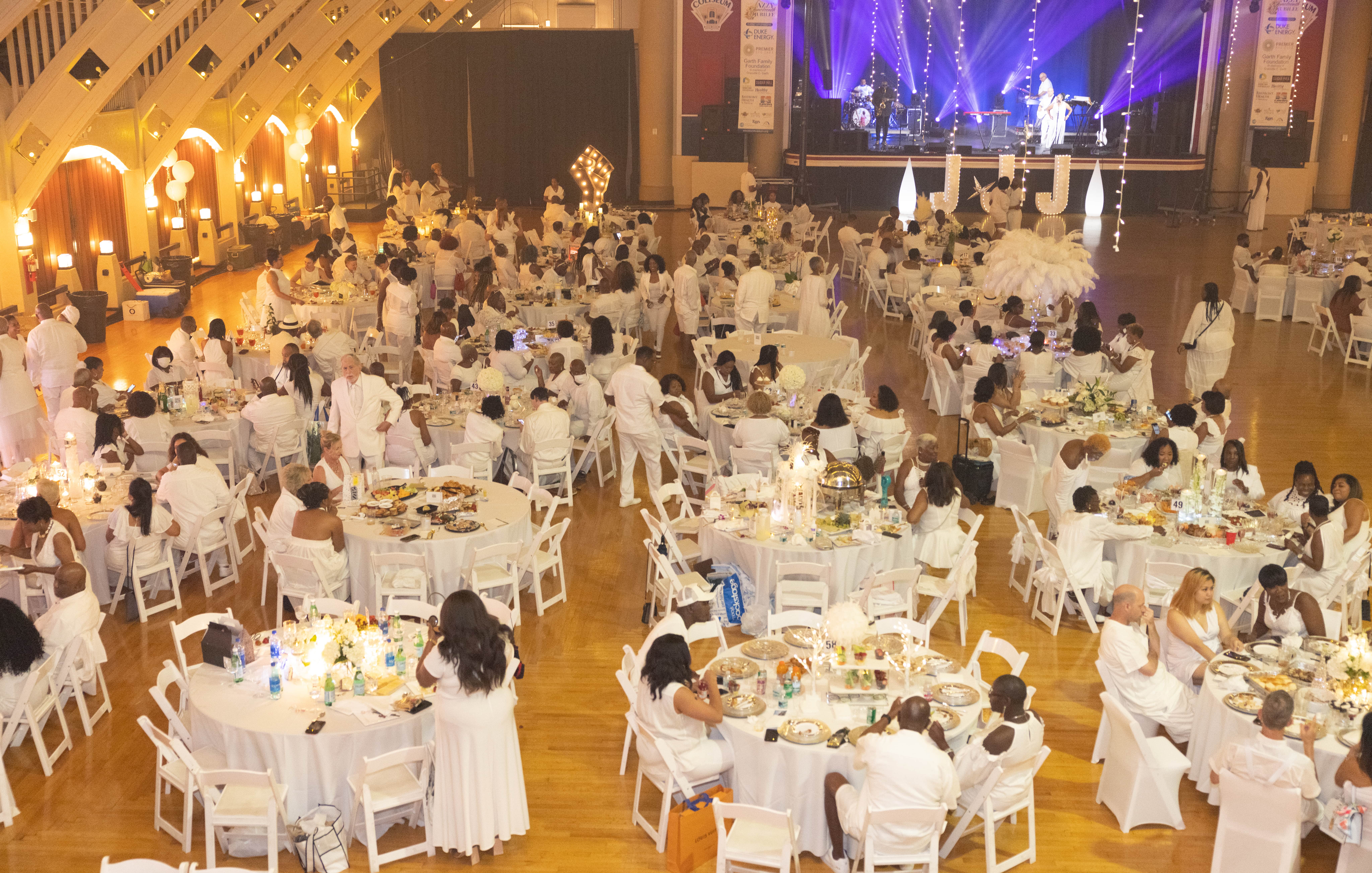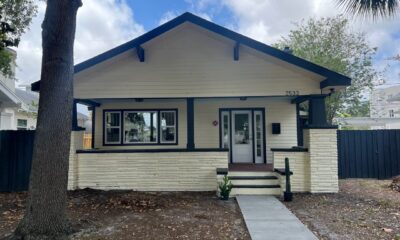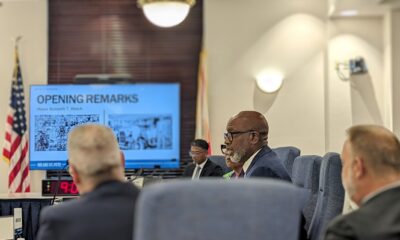Thrive
Waveney Ann Moore: For the Woodson Museum, more good news

Fortuitous. That’s how wealth advisor Clinton Byrd described his introduction to Terri Lipsey Scott, executive director of the Woodson African American Museum of Florida.
Byrd and his family happen to own a multi-million-dollar, 8,000-piece collection of African-American artifacts based in Tallahassee. Among the treasures are letters from Booker T. Washington, George Washington Carver and Frederick Douglass, autographed recordings of Marian Anderson and books by Dr. Carter G. Woodson, for whom the St. Petersburg museum is named.
After connecting with Scott and learning about the Woodson Museum’s plans for a new state-of-the-art facility, Byrd was convinced that elements of his vast collection could have a permanent home in St. Petersburg.
“She is doing exactly what Montague wanted to do,” he said, referring to Nathaniel “The Magnificent” Montague, a famous Black DJ and radio pioneer who lovingly amassed the collection over half-a-century and dreamed of creating a museum to showcase it.
“We shared a passion for African-American history,” said Byrd, who acquired the collection from the now 94-year-old Montague in 2012.
It was Nashid Madyun, executive director of Florida Humanities, who put Byrd, a FAMU grad, and Scott together.

Dr. Carter G. Woodson. Portrait by Eddie Filer Jr.
They agreed that three exhibits from the collection would be presented at the Woodson this year. The first was in February, during Black History Month, when visitors viewed “Unforgettable/Undeniable – The Works of Dr. Carter G. Woodson.” The exhibit also included a modern element, a commissioned portrait of Woodson by artist Eddie Filer Jr.
“We have many of his original books,” Byrd said of Woodson, a renowned scholar who became known as “the father of Black history.”
Before year’s end, the museum will also host an exhibit of the Lincoln Motion Picture Company, the first African-American production company. Founded by Black filmmakers in 1916, it operated until 1921. A third exhibit from the Montague Collection will feature Sister Gertrude Morgan, described by the Smithsonian American Art Museum as “a former street preacher who became an artist, poet, and musician.”
Byrd has great hopes for an ongoing relationship with the Woodson Museum. “What I envision is the opportunity for these exhibits to travel around the United States, with the intent of publicizing the new museum and exposing the Montague Collection for the first time,” he said.
Scott’s aspirations mirror his.
“The generosity that Clint Byrd has extended to the Woodson allows the museum to showcase rarely or never before seen exhibitions that highlight amazing contributions of unsung African American contributors to history,” she said.
“My hope is that Mr. Byrd and his family will consider making the Woodson African American Museum of Florida home for their extensive collection and rare treasures.”
A permanent agreement will be a coup for the museum, whose supporters have been indefatigable in their goal to “preserve, present and interpret” African-American history in St. Petersburg. They see a new facility with climate-controlled space that will be able to host permanent and traveling exhibitions as vital.
The museum opened in 2006. While its shaded and serene grounds are an asset, its 4,000-square-foot building at 2240 Ninth Ave. S is inadequate for a world-class institution.
The plan is for a new museum to be built on 5.5 acres to the north, on 22nd Street S, the historic African-American business and entertainment district known as the Deuces. A capital campaign officially kicked off in February, but rising costs mean the original fundraising goal will have to be adjusted.
“It started out at $27 million and now we are at approximately $30 million and the longer we delay construction, we might anticipate that projection to be a bit higher,” Scott said this week. “The longer we delay, the more we can anticipate rising costs.”
There’s more at stake, she said, mentioning the deferred ability to tell the African-American story in St. Petersburg and within the broader context of Florida, the nation, Africa and the African diaspora.
“Look at the cost we have borne as a society for the long delay, where we have been excluded from our history for a long time,” she said.
The capital campaign has raised about $5 million so far, with the city of St. Petersburg being “at the forefront of helping us to move the needle” towards a new facility, Scott said.
“The first $1 million we got from St. Petersburg, in addition to the land. We are going to remain hopeful that the county, the state and federal government will also do their part to ensure the creation of Florida’s first purpose-built African American museum,” she added.
What does “purpose-built” mean? Most African-American museums in Florida, Scott explained, have been relegated to retrofitted buildings, such as a house or church. In the case of the Woodson, it’s a former public housing community center.
Besides a boost from the city, the campaign has received $250,000 in federal funds from the Institute of Museum and Library Services.
It also recently got $1.5 million from the state, $1 million of which came from the African American Cultural and Historical Grants program. A giant check for the total amount was presented by State Sen. Darryl Rouson and State Rep. Michele Rayner at the museum’s recent Jazzy Juneteenth Jubilee. The event organized by the Woodson’s Society of First Ladies raised “in excess of $150,000,” Scott said.
Additionally, the Milkey Family Foundation, known for its commitments to organizations such as Daystar Life Center and Tampa Bay Watch Discovery Center at the Pier, has donated $1 million.
The Woodson is working with the Pinellas Community Foundation to raise the money for its new 30,000-square-foot museum and to cover the first three years of operation.
Foundation CEO Duggan Cooley said the organization brings its long experience and reputation of trustworthiness to endeavors like the Woodson’s. He spoke of the options available to donors.
“They can give contributions directly to the foundation. In that way, we can help with the transfer of property. Sometimes donors want to give stock,” he explained. “People can give directly to the museum, as well (woodsonmuseum.org/support/#donations). We have set up a structure so they can give online to the campaign and then also we are helping the Woodson and donors with the drafting of pledge agreements so donors who want to make significant gifts will be able to do so over time. We have also helped to publicize the opportunity to our donors. It’s in our newsletter and on our website.” Go to pinellascf.org/giving/the-woodson-museum-of-florida/
Still, Scott doesn’t regard the campaign as traditional, “because of our need to lean on those who don’t possess the wealth with the philanthropic giving that others benefit from.”
She pointed to the museum’s grassroots efforts. “We are reaching out to everyone to be a part of this process. We have individuals who are now committed to $20 to $25 a month, others who have committed $50, others who have committed $100. Whatever anyone wants to give to this campaign is going to get us to the finish line,” Scott said.
“We are in the process of a broader marketing campaign, where we are reaching out to churches, fraternal organizations, fraternities, sororities. We are reaching out to everybody imaginable where they might consider a pledge.”
At a time when teaching Black history is under assault, the need for a state-of-the-art African-American museum to tell of the Black community’s heroes, martyrs, struggles and successes has become urgent.
“If truth matters, we could never discount the accuracy of American history,” Scott said. “The contributions that Africans and African Americans have made is largely responsible for the greatness that this nation celebrates and I think it’s important that this generation and those that follow will tell a story that is inclusive of how and why we claim to be the greatest nation. Let us preserve the parts of history that have never been shared in our history books.”

Architect rendering of the new Carter Woodson African American Museum of Florida. The fundraising goal has risen to $30 million. Image: Huff Gooden.








Georgia Earp
July 8, 2022at6:26 pm
This good and exciting news!